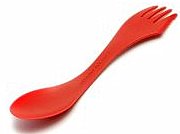This stuff can be found at most little stores along the way.
The Carbs:
Tortillas
Instant mashed potatoes
Noodles and sauce
Rice and sauce.
Mac and cheese
Ramen noodles
Bread or bagels
Cereal – Throw away the box, of course, and pack the inner bag.
“Bon Appetit” danishes – Besides carbs, fat and a load of calories per ounce, these probably don’t pack squat in nutrition but they taste good and you can pack them as tight as you want in your food bag and they don’t break apart, they just get a little flatter.
Chips—just let them get all crumbled up and eat them with a spoon.
Corn nuts
Dried fruit
Crackers
The fats:
Peanut butter—I recommend buying the 8 oz plastic jar and then re-filling it, because the 8oz size is sometimes hard to find. Peanut butter is calorie rich, requires no cooking and is good in a tortilla or just eat a spoon full.
Cheese—My personal favorite. keep it in a zip lock. It gets a little runny in the heat but it’s still good. The individually wrapped 1 oz sticks of string cheese make good pocket food.
Butter—put in in a empty, plastic, peanut butter jar. I have never carried butter but I meet a hiker that was having a problems with losing too much weight and he solved his problem by putting loads of butter on everything.
Margarine. lots of hikers carry a squeeze bottle of margarine.
Oil— You can find small plastic bottles of olive oil- but probably not at a little store.
Nuts. For some reason cashews seem to be the nut of choice for little stores; they usually also have peanuts and sometimes almonds.
Seeds—pumpkin, sunflower, etc.
The protein:
Nutritional bars— I look for ones that have substantial protein. Expensive.
Lunch meat—who would have thought. I read about bringing lunch meat in Yogi’s PCT book, She recommends buying it in small packages because they will stay fresh that way until you eat them. I tried it, and sure enough the meat stayed good for days and it’s much cheaper and more available then tuna packets.
Jerky
Powdered milk
Salami
Tuna packets
Chicken packets
Something fresh: apples, carrots, etc.
apples— If you have been on the trail for a long time, a piece of fresh fruit or a vegetable tastes wonderful. I eat the entire apple core and swallow the seeds and stem, so I don’t have to pack out anything.
Treats:
Cookies— personal favorite: Mystic mint cookies. Fig newtons are also good.
Honey bear— peanut butter and honey in a tortilla is pretty tasty. but you can also just take a swig if you have a mind to.
Hard candy
Gum.
Hot beverages: hot chocolate, tea, coffee, lemonade mix, jello mix, etc.
If they have a little deli I usually buy something pre-made for dinner that night. It’s sort of like sticking a carrot out in front of a horse; it coaxes me out of town.
Example of one day of food:
 4 oz cereal or danish
4 oz cereal or danish
2 oz powdered milk.
 2 bars, Nutritional bars, granola bars, or candy bar with nuts.
2 bars, Nutritional bars, granola bars, or candy bar with nuts.
 4 oz of snacks- jerky, chips, nuts, dried fruit, etc. I try to pick a variety in the fat, carb, and protein category. For instance if I’m buying for 3 days I may get 4 oz of jerky, 4 oz of nuts, and 4 oz of corn nuts or chips.
4 oz of snacks- jerky, chips, nuts, dried fruit, etc. I try to pick a variety in the fat, carb, and protein category. For instance if I’m buying for 3 days I may get 4 oz of jerky, 4 oz of nuts, and 4 oz of corn nuts or chips.
 2 oz hot beverage making stuff.
2 oz hot beverage making stuff.
 2 oz fat- cheese
2 oz fat- cheese
 2-3 oz protein – lunch meat, salami, tuna packet, etc.
2-3 oz protein – lunch meat, salami, tuna packet, etc.
3-4 oz carbs.—rice and sauce, instant mashed potatoes, noodles and sauce, or tortillas
4 oz something fresh- apple, carrots, etc. – only for whole days on the trail; not for the day I hike in  nor the day I hike out.
nor the day I hike out.
 3 cookies.
3 cookies.
approximately 2 lbs (.90 kilograms) of food a day.
I usually make sure every meal has a carb, a fat, and a protein.
 I met a guy who told me his theory that people have a part of their brain that is only interested in survival and until this part is appeased it’s just not going to let you have any fun or let you think clearly about anything else. So, when you stop for the night it’s important to set up your tent and say, “Look, here is your home for the night�?; take out something to eat and give yourself some water.
I met a guy who told me his theory that people have a part of their brain that is only interested in survival and until this part is appeased it’s just not going to let you have any fun or let you think clearly about anything else. So, when you stop for the night it’s important to set up your tent and say, “Look, here is your home for the night�?; take out something to eat and give yourself some water.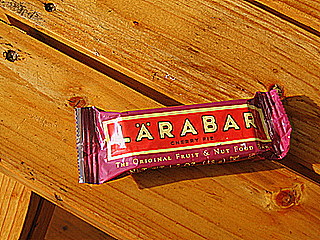

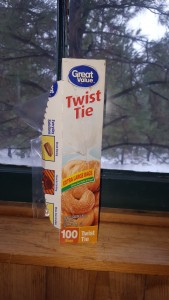 Packaging can add a lot to the weight in you food bag and then in your trash baggie. If after a week on the trail, you have more garbage then will fit in a one quart ziplock you probably didn’t slim down enough on the packaging. My favorite re-packaging bags are
Packaging can add a lot to the weight in you food bag and then in your trash baggie. If after a week on the trail, you have more garbage then will fit in a one quart ziplock you probably didn’t slim down enough on the packaging. My favorite re-packaging bags are 
 4 oz cereal or danish
4 oz cereal or danish 2 bars, Nutritional bars, granola bars, or candy bar with nuts.
2 bars, Nutritional bars, granola bars, or candy bar with nuts. 4 oz of snacks- jerky, chips, nuts, dried fruit, etc. I try to pick a variety in the fat, carb, and protein category. For instance if I’m buying for 3 days I may get 4 oz of jerky, 4 oz of nuts, and 4 oz of corn nuts or chips.
4 oz of snacks- jerky, chips, nuts, dried fruit, etc. I try to pick a variety in the fat, carb, and protein category. For instance if I’m buying for 3 days I may get 4 oz of jerky, 4 oz of nuts, and 4 oz of corn nuts or chips. 2 oz hot beverage making stuff.
2 oz hot beverage making stuff. 2 oz fat- cheese
2 oz fat- cheese 2-3 oz protein – lunch meat, salami, tuna packet, etc.
2-3 oz protein – lunch meat, salami, tuna packet, etc.
 nor the day I hike out.
nor the day I hike out. 3 cookies.
3 cookies.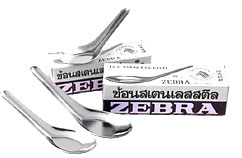 It won’t be long before I’m sporting 12 new metal Chinese spoons. A reader, of this blog, pointed me to
It won’t be long before I’m sporting 12 new metal Chinese spoons. A reader, of this blog, pointed me to 
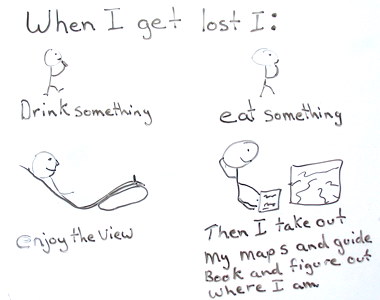
 For a toothbrush, I carry the lightest child’s size toothbrush I can find. I keep it in a plastic flip top sandwich bag. This ensures that it doesn’t get dirty, while in my
For a toothbrush, I carry the lightest child’s size toothbrush I can find. I keep it in a plastic flip top sandwich bag. This ensures that it doesn’t get dirty, while in my 


